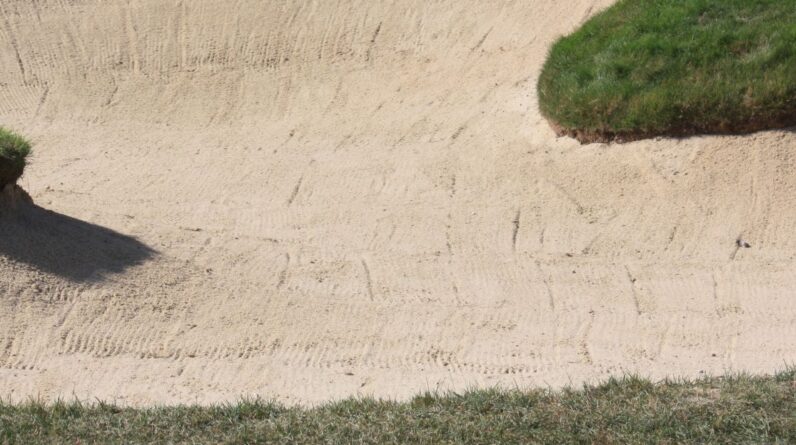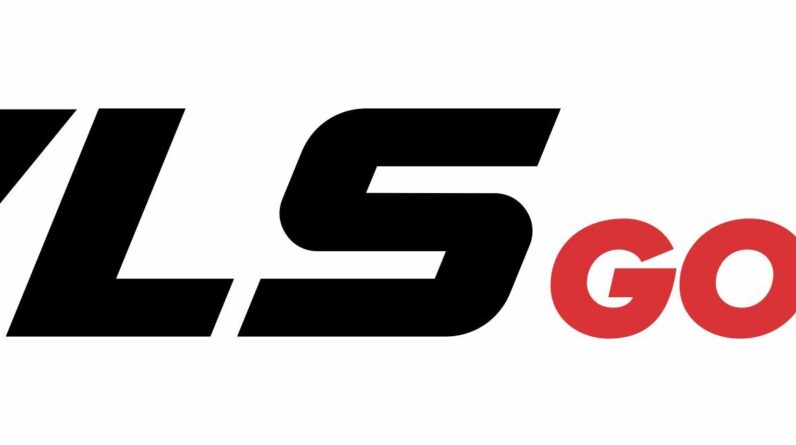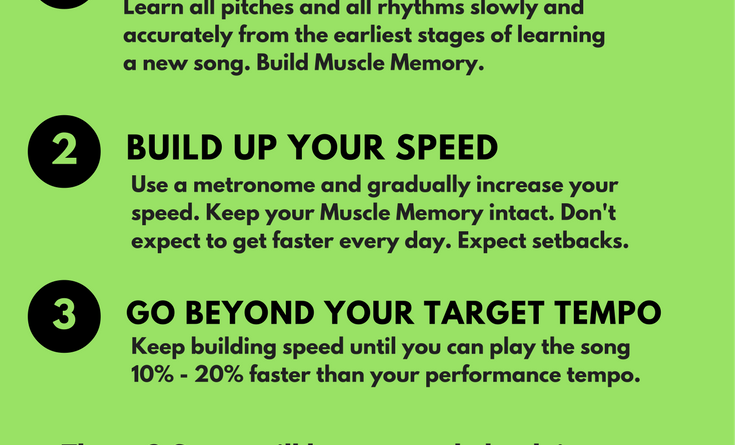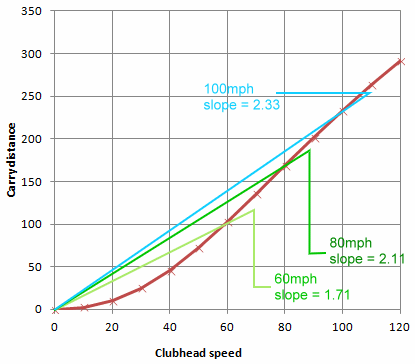When it comes to improving your golf game, understanding how to factor in your personal strengths and limitations for club distances is key. It’s not just about having the right equipment or technique, but also assessing your own abilities and playing to your strengths. By taking into account factors such as your swing speed, flexibility, and shot accuracy, you can determine the optimal club distances that work best for you. In this article, we will explore practical tips and insights on how to factor in your personal strengths and limitations for club distances, helping you enhance your game and achieve better results on the course.
Physical Factors
Body Composition
Your body composition, including factors such as height, weight, and muscle mass, can play a significant role in your club distances. Generally, taller individuals may have a longer reach, allowing for more power and a potential for greater distances. Conversely, individuals with a smaller frame might have an advantage in accuracy and control. It’s important to understand your body composition and how it may affect your game, allowing you to harness your strengths and compensate for any limitations.
Flexibility
Flexibility is another crucial physical factor when it comes to maximizing your club distances. A flexible body enables a full range of motion, allowing you to generate more power and speed with your swing. Incorporating stretching exercises and regularly practicing yoga can improve your flexibility, leading to longer and more consistent shots on the golf course.
Strength
Strength plays a vital role in generating power and control in your golf swing. By focusing on strength training exercises that target your core, upper body, and lower body, you can enhance your ability to generate speed and hit the ball with greater force. It is important to maintain a balanced muscle development to ensure optimal control and accuracy while swinging the club.
Coordination
The coordination between your body and swing mechanics is crucial in achieving consistent and effective club distances. Developing coordination through regular practice and professional guidance can help you synchronize your body movements, allowing for a more efficient transfer of energy from your swing to the ball. Improving coordination through targeted exercises and drills can make a significant difference in your overall golf performance.
Balance
Balance is a fundamental aspect of a successful golf swing. It allows you to maintain stability throughout your swing, improving accuracy and control. Engaging in exercises that enhance both static and dynamic balance, such as yoga or balance-specific workouts, can help you improve your balance on the golf course. Developing better balance will contribute to more controlled and powerful shots.
Skill Level
Swing Mechanics
Having solid swing mechanics is paramount to achieving consistent and effective club distances. Working with a golf instructor to refine your technique and ensure a proper swing path, clubface control, and weight transfer can greatly improve your ability to hit the ball with power and accuracy.
Accuracy
Precision and accuracy are essential factors when gauging club distances. Being able to consistently hit the ball where you intend helps you to better control the distance and trajectory of your shots. Practicing accuracy drills and maintaining a focus on precision during practice rounds can improve your ability to hit your desired targets on the course.
Consistency
Consistency is the key to success in golf. Being able to replicate your swing and achieve consistent results enables you to better predict your club distances. By practicing regularly and analyzing your swing patterns, you can identify any inconsistencies and work on eliminating them, leading to more reliable club distances.
Shot-shaping Ability
Shot-shaping ability refers to the capability to intentionally manipulate the flight of the ball, such as drawing or fading it. By mastering different shot shapes, you can adapt to various course layouts and effectively navigate around obstacles. Developing a strong shot-shaping ability can enhance your strategic approach on the golf course and potentially optimize your club distances.
Course Management
Understanding and effectively managing the course is a crucial skill in golf. Knowing the course’s layout, hazards, and wind patterns can help you make informed decisions about club selection and shot execution, ensuring that you maximize your distances while minimizing risks. Developing solid course management skills can lead to better club distances and overall game performance.

Experience
Years of Playing
Your years of playing experience can significantly impact your club distances. As you accumulate more years on the course, you gain a better understanding of your swing rhythm, distance control, and shot-making ability. Over time, this experience can lead to improved club distances as you become more familiar with your individual strengths and limitations.
Competitive Experience
Participating in competitive golf provides valuable opportunities to refine your skills and assess your club distances under pressure. Competition helps you develop a better understanding of how your strengths and limitations impact your performance. The experience gained through competitive play allows you to make adjustments and fine-tune your game, leading to more consistent and optimized club distances.
Knowledge of Different Clubs
Having a thorough knowledge of the different clubs in your bag is essential for selecting the most appropriate club for each shot. Understanding the characteristics and distances you achieve with each club can help you make informed decisions on the course, ensuring that you have the right club in hand to achieve the desired distance.
Understanding of Course Conditions
Being able to assess and adapt to changing course conditions can significantly impact your club distances. Factors such as wind speed and direction, temperature, and course firmness can all affect how the ball travels through the air and rolls upon landing. Developing a keen understanding of these conditions allows you to make adjustments to your swing and shot selection, enabling you to optimize your club distances.
Club Fitting
Importance of Custom Fitting
Custom fitting is a crucial aspect of optimizing your club distances. Working with a club fitting professional ensures that your clubs are tailored to your specific physical attributes, swing mechanics, and playing style. Custom fitting helps to maximize your club distances by optimizing factors such as club length, lie angle, and shaft characteristics to suit your individual strengths and limitations.
Matching Club Specifications to Personal Strengths
Matching the club specifications to your personal strengths is key in optimizing your club distances. For example, if you possess above-average strength, you may benefit from a stiffer shaft to better control the clubhead during your swing. Understanding your strengths and aligning the club specifications with them allows you to generate maximum power and accuracy, resulting in better overall club distances.
Finding Optimal Shaft Flex
The flex of the golf club’s shaft can significantly impact your club distances. A shaft that is too stiff may limit your ability to generate sufficient clubhead speed, potentially reducing distances. On the other hand, a shaft that is too flexible could result in a loss of control. Working with a club fitting professional to find the optimal shaft flex for your swing speed and tempo can help maximize your distances.
Choosing the Right Grip Size
The grip of the golf club directly affects your ability to control the clubface during your swing. Using the wrong grip size can compromise both your accuracy and power. Investing in a proper grip fitting, considering factors such as hand size and grip pressure, ensures that you have the right grip size to maintain control and generate optimal club distances.

Physical Fitness
Overall Fitness Level
Maintaining a good overall fitness level contributes to maximizing your golf club distances. Regular cardiovascular workouts, strength training, and flexibility exercises improve your body’s efficiency, enabling you to maximize your clubhead speed and generate more power through your swing. Incorporating a well-rounded fitness routine can enhance your physical ability to achieve optimal club distances.
Cardiovascular Endurance
Cardiovascular endurance is essential for sustained performance on the golf course. By improving your cardiovascular fitness through activities such as running, swimming, or cycling, you can enhance your stamina and maintain focus throughout the round. Increased endurance enables you to produce consistent swing mechanics, leading to more reliable and optimized club distances.
Muscular Power and Endurance
Developing muscular power and endurance is crucial for generating the necessary force and maintaining control in your golf swing. Specific strength training exercises focusing on your core, lower body, and upper body can enhance your ability to generate clubhead speed and hit the ball with power and accuracy. Building both power and endurance allows you to achieve consistent club distances throughout your round.
Flexibility and Range of Motion
Adequate flexibility and range of motion are essential for achieving maximum club distances. Engaging in regular stretching exercises and incorporating activities such as yoga or Pilates can improve your flexibility, enabling a full and unrestricted range of motion during your swing. Greater flexibility allows for a more efficient transfer of energy from your body to the club, resulting in increased distances.
Core Strength
A strong core is the foundation for an effective golf swing. Strengthening your core muscles through targeted exercises, such as planks or rotational movements, helps stabilize your body throughout the swing and generates power. A solid core enhances your ability to rotate effectively, leading to improved club distances and overall swing performance.
Mental Factors
Focus and Concentration
Maintaining focus and concentration is vital for optimizing your club distances. By staying mentally present and fully engaging in each shot, you can ensure that you give each swing your best effort. Minimizing distractions and developing effective pre-shot routines can help you maintain focus, leading to more intentional and successful shots.
Confidence
Confidence plays a significant role in achieving optimal club distances. Believing in your abilities and trusting your swing allows you to swing freely and generate maximum power. Developing confidence through successful practice sessions, positive self-talk, and visualization techniques can positively impact your club distances and overall performance on the golf course.
Mental Resilience
Golf is a mentally challenging sport, and developing mental resilience is essential for success. Bouncing back from setbacks, maintaining a positive attitude, and staying focused despite adversity all contribute to your ability to optimize your club distances. Building mental resilience through techniques such as mindfulness and resilience training can help you stay composed and maximize your performance.
Course Strategy
Having a strategic mindset is crucial for optimizing your club distances on the golf course. Understanding the course layout, utilizing knowledge of your strengths and limitations, and making informed decisions about shot selection all contribute to maximizing your distances. Developing effective course management strategies and adjusting your game plan based on changing conditions can lead to better club distances and improved overall performance.

Environmental Factors
Wind
Wind is a significant environmental factor that can impact your club distances. Understanding how wind affects the flight of the ball and making the necessary adjustments can help optimize your distances. Learning to gauge wind speed and direction, as well as adjusting your aim and club selection accordingly, allows you to navigate windy conditions and achieve desirable club distances.
Elevation
Elevation is another environmental factor that affects club distances. Higher altitude environments, where the air is thinner, can result in increased ball carry and potentially longer distances. Conversely, playing at lower altitudes may lead to reduced distances. Being aware of the elevation changes on a course and adjusting your club selection can help optimize your distances based on the prevailing conditions.
Temperature and Humidity
Temperature and humidity can also impact club distances. In colder conditions, the decreased air density can potentially lead to shorter distances. Conversely, warmer temperatures and higher humidity may result in increased distances due to the air being less dense. Understanding how temperature and humidity influence your distances can aid in making appropriate adjustments to your shot selection and swing mechanics.
Course Conditions
Course conditions, such as the firmness of the fairways and greens, can influence your club distances. Firmer fairways generally provide more roll and potentially longer distances, while softer fairways may reduce the roll and result in shorter distances. Similarly, greens that are firm and fast may require more precision on approach shots to optimize distances. Adapting to the varying course conditions through adjustments in your swing mechanics, shot selection, and club choice can help optimize your club distances.
Tracking and Analysis
Using Launch Monitors
Using launch monitors can provide valuable data to help analyze your club distances. Launch monitors measure variables such as ball speed, launch angle, and spin rate, allowing you to gain insights into how your swing and club selection impact your distances. Analyzing this data can help identify areas for improvement, fine-tune your club distances, and make more informed decisions on the golf course.
Gathering Data on Club Distances
Keeping track of your club distances is essential for understanding your strengths and limitations. Recording the distances achieved with each club during practice sessions and on the course can help build a reliable reference for club selection and shot planning. By regularly updating and analyzing this data, you can identify trends, establish realistic expectations, and optimize your club distances.
Analyzing Shot Patterns
Analyzing shot patterns can provide valuable insights into your club distances. By reviewing the dispersion and consistency of your shots, you can identify any consistent biases or areas for improvement. This analysis allows you to make appropriate adjustments to your swing mechanics or club selection to optimize your club distances and improve overall performance.
Identifying Strengths and Weaknesses
Tracking and analyzing your club distances helps identify both strengths and weaknesses in your game. By understanding your strengths, you can leverage them to optimize your distances and improve your overall performance. Recognizing weaknesses allows you to focus on specific areas for improvement, such as technique or physical fitness, to address any limitations and optimize your club distances.
Improvement Strategies
Strength and Conditioning
Incorporating strength and conditioning exercises into your training routine can greatly enhance your club distances. By targeting specific muscle groups involved in the golf swing and improving overall fitness, you can increase power, stability, and control. Working with a fitness trainer or golf-specific strength and conditioning program can help you design a tailored program to optimize your physical abilities and improve your club distances.
Technique Improvement
Continuously working on improving your swing technique is essential for optimizing club distances. Seeking guidance from a golf instructor, engaging in regular practice sessions, and incorporating drills targeting specific aspects of your swing mechanics can help refine your technique. By addressing any technical deficiencies and establishing proper fundamentals, you can maximize your distances and achieve more consistent ball striking.
Practice Routines
Developing a structured and purposeful practice routine is key to optimizing your club distances. Focusing on specific aspects of your game, such as distance control or shot shaping, during practice sessions allows you to hone in on areas that need improvement. Incorporating a variety of drills, simulated game scenarios, and practice rounds helps replicate on-course conditions, leading to improved club distances and overall performance.
Course Management Skills
Improving your course management skills can positively impact your club distances by enabling you to make more strategic decisions on the golf course. Understanding the optimal landing areas, risk-reward scenarios, and shot selection based on hazards and course layout can lead to better club distances. Developing a solid course management strategy, complemented by effective shot execution, can optimize your distances and improve your overall game.
Mental Game Training
The mental aspect of golf is often overlooked but plays a significant role in optimizing your club distances. Engaging in mental game training, such as visualization, mindfulness, and resilience exercises, can help you develop a strong mental foundation. By improving your ability to focus, manage pressure, and stay positive, you can enhance your club distances and overall performance on the golf course.
Consulting with Professionals
Golf Instructors
Consulting with a golf instructor can provide valuable insights and guidance on optimizing your club distances. A qualified instructor can assess your swing mechanics, tailor instruction to your individual needs, and help identify areas for improvement. Working with a golf instructor can lead to the development of a more efficient and effective swing, resulting in improved club distances.
Fitness Trainers
Engaging the services of a fitness trainer specializing in golf-specific training can greatly enhance your physical capabilities and optimize your club distances. A fitness trainer can design a tailored strength and conditioning program focused on developing the necessary physical attributes for maximizing performance on the golf course. By training under professional guidance, you can improve your physical fitness and achieve optimal club distances.
Club Fitters
Working with a club fitting professional is essential for ensuring that your equipment is optimized for your individual strengths and limitations. A club fitter can analyze your swing characteristics, body measurements, and club specifications to customize your equipment to maximize club distances. By consulting with a club fitter, you can ensure that your clubs are personalized to suit your unique needs, leading to improved performance.
Sports Psychologists
Consulting with a sports psychologist can provide valuable insights into optimizing your mental game and, as a result, your club distances. A sports psychologist can help you develop mental strategies and techniques to enhance focus, manage pressure, and build confidence. By addressing any mental barriers, you can improve your overall mental resilience, positively impacting your club distances and overall performance on the golf course.
In conclusion, optimizing your club distances requires a comprehensive understanding of various factors, including physical attributes, skill level, experience, club fitting, physical fitness, mental factors, environmental conditions, and tracking and analysis. By considering and addressing these aspects, you can identify your personal strengths and limitations, make necessary adjustments, and develop strategies to maximize your distances and overall golf performance. It is important to consult with professionals, including golf instructors, fitness trainers, club fitters, and sports psychologists, to receive expert guidance and support in all areas of your game. With dedication, practice, and a holistic approach, you can optimize your club distances and elevate your performance on the golf course.





